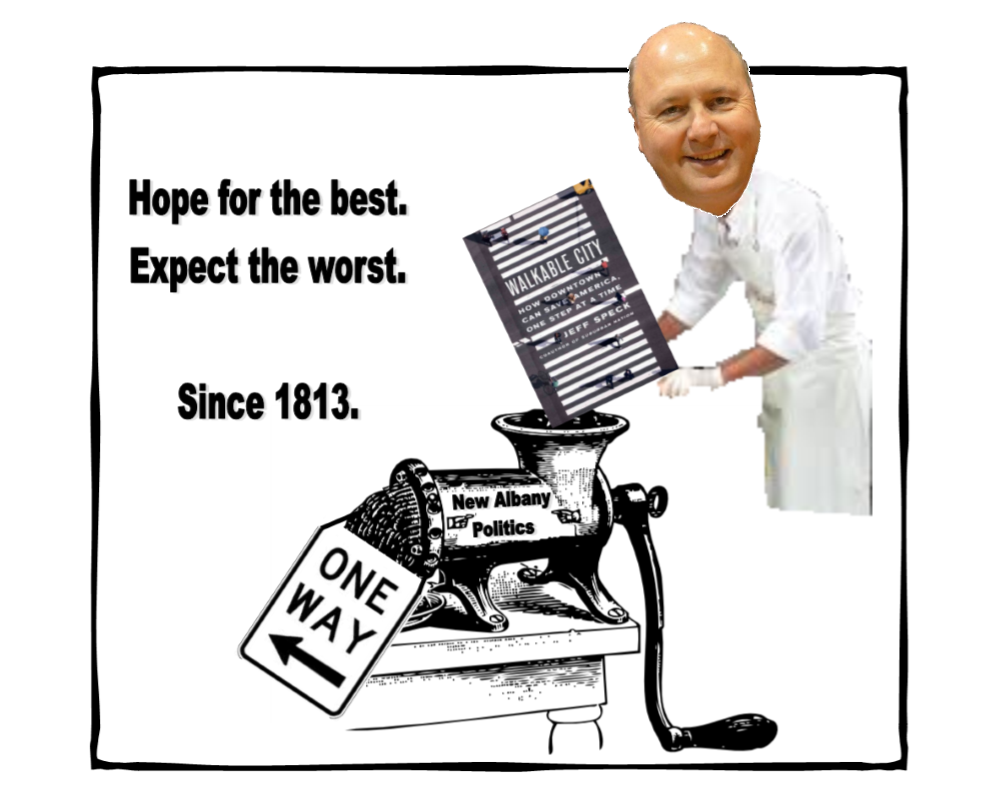
Jeff Speck provided New Albany with a detailed plan for reverting our streets to a sensible design, one capable of supporting and enhancing quality of life in neighborhoods, instituting multi-modal uses and contributing to indie business success.
Jeff Gahan handed it to an engineering firm that employs the wife of Gahan’s economic dishevelment director. There’ll be ample monetization of campaign finance, but thus far, there’s no indication of substantive, transformative reform.
You’d expect such from a local Democrat?
For those keeping score, it’s an example of copying the municipal governance designs that DON’T WORK, not the ones that do.
The Simplest Way to Avoid Bad Street Design: Copy the Ones That Work, by Jeff Speck (City Lab)
Models matter. Let’s design more streets like the streets we already love.
When you’re a hammer, everything looks like a nail. And when you’re a traffic engineer, it seems, everything looks like a highway.
If traffic engineers did not control the design of so many of our public spaces, this might not be a problem. But they do—and that’s especially true here in the U.S. Even when traffic engineers have the best intentions, too many simply lack the tools to make successful places. In the typical American city, asking a traffic engineer to design a walkable street is like asking a hammer to insert a screw.
Cutting to the chase. Have past practitioners of city planning in New Albany ever learned from their mistakes?
Have they ever been held accountable?
Let’s ask John Rosenbarger and Scott Wood, shall we?
City planning is not just an art, but also a profession, and like in the professions of law or medicine, its practitioners have a responsibility to learn from past successes and failures.
Study of precedent makes it clear that boulevards create street life and enhance real estate value, while highways obliterate street life and sunder real estate value. It is not too late for Lowell to embrace a model that will transform this site from a place that is easy to get through to a place worth arriving at. Similarly, all of our cities, as they contemplate expensive reconstruction of obsolete roadways, have two models to choose from, one led by engineering, and another led by precedent: the study of places we love.











